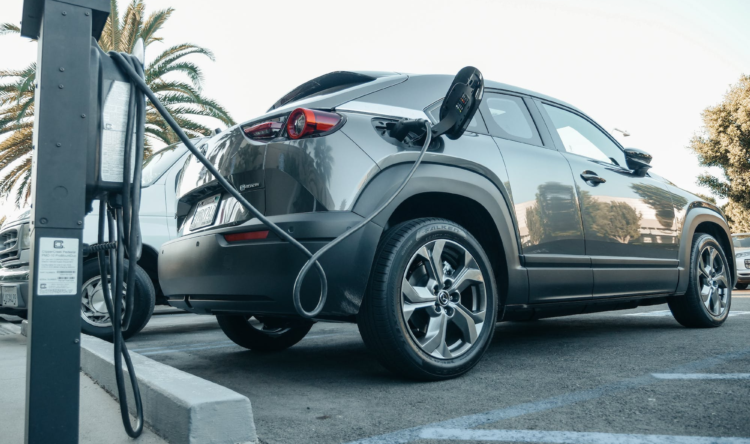Fast & Clever
Smart motorways are increasing in number, so it is essential that new drivers, and existing drivers for that matter, are up to speed
Smart motorways are technology-driven, designed to increase traffic capacity and relieve congestion. The thinking is that by controlling the speed and flow of traffic more effectively, journey times could be more reliable and traffic jams reduced. Learner driver lessons on motorways with an ADI in a car with dual controls are expected to be legalised early in 2018. As part of the training and coaching on the subject of ‘Motorway Driving’, new drivers need to understand the concept of smart motorways. Using real time technology, motorway control centres monitor traffic and can activate and change signs and speed limits. They can also increase the capacity of the road by either temporarily or permanently opening the hard shoulder to traffic. Currently, only newly qualified and existing drivers can be given lessons on the motorway. But when the proposed legal changes come into force, it will be up to the ADI to decide when the learner driver is competent enough to take motorway lessons.
Recap & Review
● the driving skills needed for successful ‘Motorway Driving’
● the meaning of ‘positive driving’
● National Standard for driving cars – Element 3.1.4: Drive on motorways and dual carriageways
Core of the lesson
Introducing the SMART motorways programme. Some stretches of motorway may have local, active traffic management control systems installed. These systems will change speed limits or the direction of flow in particular lanes.
Drivers must obey the instructions given by such systems, for example:
● never drive in a lane closed by a red ‘X’
● keep to the speed limit shown on the gantries
The red ‘X’ indicates that a lane is closed, and drivers will need to move out of that lane promptly. This may be because of debris, or even a person or animal, on the road. There may be a collision or a breakdown
up ahead, or the lane may be being kept clear for the emergency services. The hard shoulder may be converted to become a normal running lane when there is traffic congestion. Otherwise, if the regular lanes are running normally, the red ‘X’ may appear over the hard shoulder and drivers will need to return to regular lanes.
Speed limits
● Overhead gantries provide variable speed limits to help manage traffic to help smooth the flow and reduce “stop-start” driving. Normal national limits apply when no signs are showing.
● A speed limit displayed inside a red circle is legally enforceable. If you don’t keep to this speed limit, you are breaking the law
● Speed cameras are in operation on smart motorways. If you don’t keep to the speed limit, you may receive a fine.
Other learning points:
● a solid white line indicates the hard shoulder – don’t drive in it unless directed.
● a broken white line indicates a normal running lane
● if your vehicle experiences difficulties, exit the smart motorway immediately if possible
● use the refuge areas for emergencies if there’s no hard shoulder
● put your hazard lights on if you break down
Vehicle breakdowns on SMART motorways
With modern, well maintained vehicles these are a lot less than cure: keep your car well maintained, check your tyres and make sure you have enough fuel for your journey. All motorists should be able to make their own recovery arrangements in the event of a breakdown. Carry your vehicle breakdown cover details of this with you.
● Always try to exit the smart motorway immediately if your vehicle is damaged or experiences difficulties. If that’s not possible, try to move into the nearest place of relative safety.
● On most motorways this will be the hard shoulder. But on a smart motorway there may not always be a hard shoulder, or the hard shoulder may be open to traffic. In these cases you’ll see emergency refuge areas (ERA) spaced regularly along the motorway. Make your way to the nearest one.
Steps to follow:
● Use an emergency refuge area if you are able to reach one safely. These are marked with blue signs featuring an orange SOS telephone symbol on them.
● If you can leave your vehicle safely, contact Highways England via the roadside emergency telephone provided in all emergency refuge areas.
● If you cannot get to an emergency refuge area but the vehicle can be driven, move it to the hard shoulder (where provided) or as close to the nearside verge or other nearside boundary as possible.
● In all cases, switch on your hazard warning lights.
● If you stop in the nearside lane next to a hard shoulder, on the hard shoulder or on the verge, where it is safe to do so, you and other occupants must exit the vehicle via the nearside (left hand) door, and wait behind the safety barrier.
● If it is not possible to get out of your vehicle safely, you should stay in your vehicle with your seat belt on and dial ‘999’ if you have access to a working mobile phone.
● Once the regional traffic control centre is aware of your situation, via the police or roadside technology such as CCTV, they can use the smart motorway technology to set overhead signs and close the lane to help keep traffic away from you. They will also send a traffic officer or the police to help you.
Hard shoulder use
● On smart motorways you will see refuge areas spaced regularly alongside the motorway. You should use these in emergencies if the hard shoulder is being used for normal running traffic.
● If there is no sign, or a red ‘X’ is displayed, then normal hard shoulder rules apply.
● A hard shoulder is always clearly identified with a solid white unbroken line.
● On some smart motorways, the hard shoulder has been permanently converted into an extra lane, and this will be marked with a broken white line






